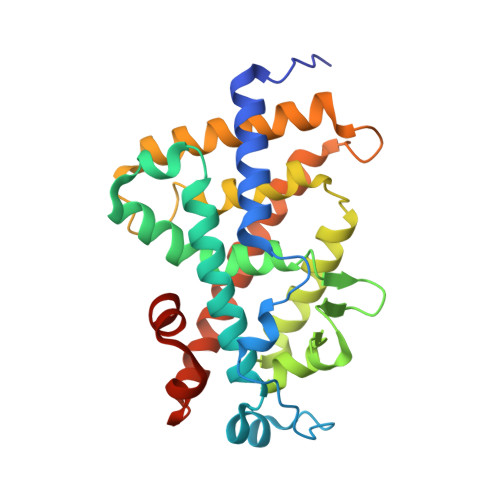Structure-based design of a superagonist ligand for the vitamin d nuclear receptor.
Hourai, S., Rodrigues, L.C., Antony, P., Reina-San-Martin, B., Ciesielski, F., Magnier, B.C., Schoonjans, K., Mourino, A., Rochel, N., Moras, D.(2008) Chem Biol 15: 383-392
- PubMed: 18420145
- DOI: https://doi.org/10.1016/j.chembiol.2008.03.016
- Primary Citation of Related Structures:
3CS4, 3CS6 - PubMed Abstract:
Vitamin D nuclear receptor (VDR), a ligand-dependent transcriptional regulator, is an important target for multiple clinical applications, such as osteoporosis and cancer. Since exacerbated increase of calcium serum level is currently associated with VDR ligands action, superagonists with low calcium serum levels have been developed. Based on the crystal structures of human VDR (hVDR) bound to 1alpha,25-dihydroxyvitamin D(3) and superagonists-notably, KH1060-we designed a superagonist ligand. In order to optimize the aliphatic side chain conformation with a subsequent entropy benefit, we incorporated an oxolane ring and generated two stereo diasteromers, AMCR277A and AMCR277B. Only AMCR277A exhibits superagonist activity in vitro, but is as calcemic in vivo as the natural ligand. The crystal structures of the complexes between the ligand binding domain of hVDR and these ligands provide a rational approach to the design of more potent superagonist ligands for potential clinical application.
Organizational Affiliation:
Institut de Génétique et de Biologie Moléculaire et Cellulaire, Département de Biologie et de Génomique Structurales, Université Louis Pasteur, Strasbourg F-67000, France.















